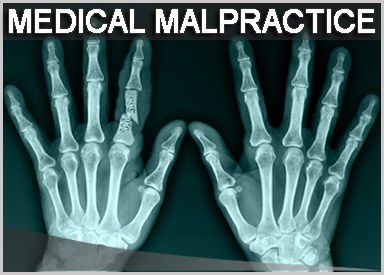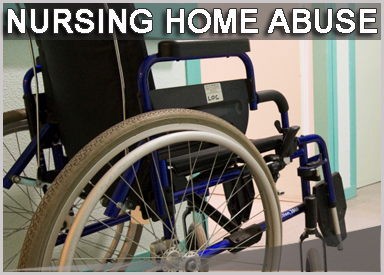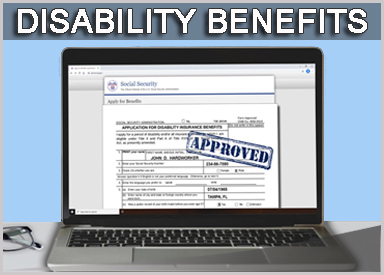Your Social Security Disability Lawyers
Your Christian Law Firm, Dean Burnetti Law represents disabled people that have been denied disability benefits in Polk County, including: Lakeland, Auburndale, Bartow, Haines City, Lake Wales, Mulberry, Polk City, and Winter Haven; in Hillsborough County, including: Brandon, Tampa, and Plant City; in Pinellas County, including Clearwater, St. Pete, Gulfport, Treasure Island, Largo, Oldsmar; and all of the surrounding Greater Central Florida and West Central Florida Areas.
Job 29:15 - “I was eyes to the blind and feet to the lame.”
“Disability Payments”, technically known as “Social Security Disability Insurance” (SSDI) is a program provided by the United States federal government. The purpose of its origin was to provide long-term financial protection to disabled adults who have previously paid into the program through years of their employment.
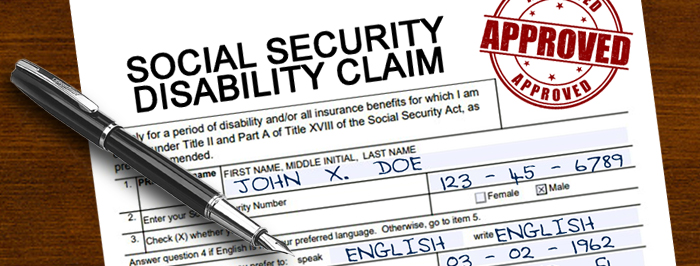
If you’re unable to hold down a fulltime job to support yourself and your family due to a medical condition, whether you have a debilitating illness or injury, or if, for some medical reason, your body works against you rather than with you, you might be thinking about applying for Social Security Disability benefits.
If this is the case, you may have even discussed the possibility with some of your friends or family members. If so, you may have heard varying stories about how things work. If you remember the way life was in high school, that’s similar to the Social Security Disability process: There are more myths and rumors floating around than there are facts. Read on, and we’ll attempt to enlighten you as to which of these stories are myths and which are facts:
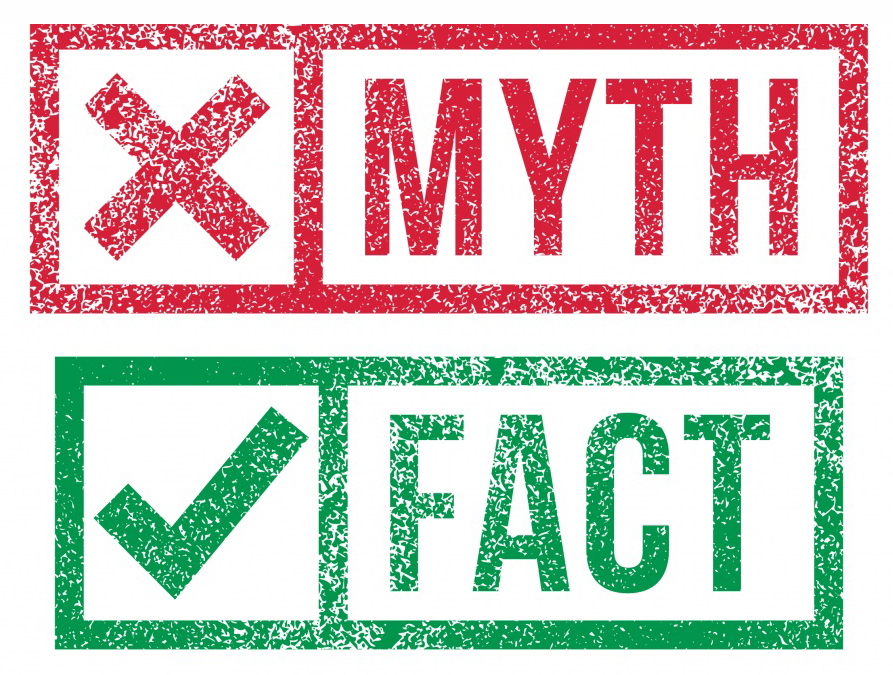 MYTH: I probably shouldn’t even bother to apply. I’ll probably just be denied anyway.
MYTH: I probably shouldn’t even bother to apply. I’ll probably just be denied anyway.
FACT: This is false. In fact, nothing could be further from the truth. While the Social Security Administration requires enough proof that the applicant is truly disabled and unable to work, they are there to assist those who are unable to help themselves. Though it is true that applicants aren’t often approved the first time they apply for benefits, they have the right to appeal the decision. When the appeal process evidences to the Social Security Administration that you have a disability that fits within the parameters of their guidelines, they will absolutely pay out.
MYTH: If my doctor says I’m disabled, I’ll automatically qualify for Social Security Disability benefits.
FACT: Unfortunately, this is not automatically true. Qualifying factors that determine a person’s eligibility for Social Security Disability are based on a legal decision and not a medical decision. (This is a fact that often baffles people because of the legal mumbo-jumbo.) The physician who treats your condition and provides details about your medical status must be a credible medical professional, and must provide honest, detailed information. Once that information and other details are filed, the decision is ultimately up to the Social Security Administration.
MYTH: Once you’re on Social Security Disability, you’re on it for life.
FACT: While it’s possible that you may be on Social Security Disability for many years or decades, it’s actually not an automatic fact. The Social Security Administration will periodically review your medical condition. If it is anticipated that your condition will improve, the first review is generally scheduled from 6 to 18 months after the date you first applied for disability benefits. If improvement of your condition is technically possible but your doctor doesn’t expect you to improve, then medical reviews are scheduled roughly about every 3 years. If your doctor states that your condition is not one that is possible to ever improve, it’s typically 7 years between each review.
MYTH: Social Security Disability Income will be able to replace the majority of my work-related income.
FACT: Unfortunately, Social Security Disability Income is designed to replace only a portion of the applicant’s lost income. It’s meant to provide assistance in meeting people’s basic living needs, and the payments are modest. In 2020, the average disability benefit was $1,258 a month. Again, this is as an incentive to encourage people to work in whatever capacity they are able.
One thing many people don’t understand is that Social Security Disability Insurance is not the same as Supplemental Security Income. (The latter is a federal income supplement program.) The main difference between the two programs is how they are funded.
With Social Security Disability, employment taxes primarily finance the benefits to eligible workers and their families based on the worker’s earnings. With Supplemental Security Income, general taxes are used to fund the program to serve needy people. That being said, you are allowed to apply to both programs at the same time, and neither is easier to collect than the other.
MYTH: If I go to work, I’ll automatically lose my Medicare or Medicaid.
FACT: As long as you continue receiving a benefit check in any amount, you will keep your health insurance. If you earn so much by working that your Social Security Disability checks stop, you may still qualify for Medicare for up to 93 months. If you currently receive Medicaid, you may be eligible to continue to receive Medicaid even if you stop receiving Social Security benefits due to your new work status. You just need to meet certain eligibility requirements, including earning less than a threshold amount set by each state. It’s also possible to return to work while collecting Social Security Disability and without jeopardizing your benefits. You may be eligible for a 9-month trial period to test whether you can work.
MYTH: If I go to work and my Social Security checks stop, but then my disability forces me to stop working again, it will take forever for me to get approved for benefits again, so it’s probably best if I don’t try to work.
FACT: If your income from wages caused your benefits to cease within the past five years, and if you meet a few other requirements – including still having the original medical condition you had when you were first approved – you will not need to reapply. A program called Expedited Reinstatement has been put in place as a work incentive for recipients of Social Security Disability.
MYTH:When applying for Social Security Disability, I need to immediately hire a lawyer.
FACT: The first step is actually to discuss the matter with your doctor. The doctor will have to say that he or she thinks you are disabled before you’ll get anywhere with the Social Security Administration. If your doctor advises you to try a different medication, medical device, or physical therapy, that’s because he or she anticipates that these may help you be able to continue working. You need to take the doctor’s advice and try the suggestions before you give up working completely. If you don’t, the Social Security Administration may think you don’t want to cooperate with medical advice or that you have no desire to continue working.
MYTH: When applying for Social Security Disability, I just need a note from my doctor that says I’m disabled.
FACT: Having thoroughly detailed documentation of your disability greatly increases the likelihood that you’ll be approved for Social Security Disability benefits. The Social Security Administration’s website provides a detailed list of what they look for during their investigation. It would greatly help you achieve a positive resolution of your case if you’d gather as much of this information as you can before you submit your initial application. The more thorough the information you provide, the better.
MYTH: My Social Security Disability checks will start coming immediately after I’m approved.
FACT: Actually, processing can take up to five months before you are ever issued a payment. Once your request is approved, the Social Security Administration will send you a letter with the effective date. Your first payment will then be issued for the sixth full month following your disability effective date. Plus, you won’t receive the payment until the seventh month following your disability effective date, since payments are made during the month after the month they cover.
MYTH: The odds of young people becoming severely disabled and needing Social Security Disability benefits is rare.
FACT: The Unites States government estimates that one in four workers will become disabled before they reach retirement age.
MYTH: Other than hiring an attorney, there are no resources to help me apply for Social Security Disability benefits.
FACT: The Social Security Administration has published a disability insurance booklet on their website which includes a list of the information you’ll need to start your application process. Also, various foundations for different disabilities often offer guidance such as the National MS Society, the National Psoriasis Foundation, and the National Alliance on Mental Illness. If you have a specific illness or injury, it may benefit you to see if there is a foundation for that injury or illness that can assist you in the application process. However, if your initial application is denied, you may want to consider hiring an attorney for your appeal.
How Much Money Will Social Security Disability Pay Me?
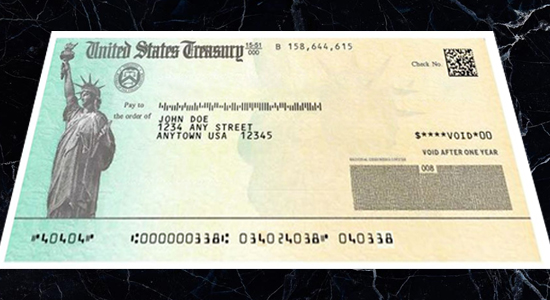 The Social Security Administration calculates Social Security Disability benefit payments by averaging your average lifetime earnings before your disability began. Contrary to popular opinion, it has nothing to do with how severe your disability may be or how many assets you already have.
The Social Security Administration calculates Social Security Disability benefit payments by averaging your average lifetime earnings before your disability began. Contrary to popular opinion, it has nothing to do with how severe your disability may be or how many assets you already have.
The amount of each disability payment is unique for each individual. The Social Security Administration uses a complex weighted formula to calculate each person’s individual benefits, up to the maximum benefit allowed (which is $2,861 as of 2019, an increase of $73 since 2018’s maximum benefit allowed).
Most Social Security Disability payments average between $700 and $1,700 per month, with the estimated monthly median being $1,234. This amount may be reduced, however, if you are receiving simultaneous disability payments from another source or sources.
The Social Security Administration bases your retirement benefits, as well as your disability benefits, on the amount of income on which you’ve paid Social Security taxes. This figure is called “covered earnings.” Your average covered earnings over a period of years is known as your “average indexed monthly earnings.” The Social Security Administration applies a formula to your average indexed monthly earnings to calculate your primary insurance amount which is the base figure the Social Security Administration uses in setting your benefit amount. The formula consists of fixed percentages of different amounts of income called “bend points” (bend points are adjusted each year). For example, in the current year, 90% of the first $895 of your average indexed monthly earnings was added to your primary insurance amount, and an additional 32% of your average indexed monthly earnings from $885 to $5,397 plus 15% of your average indexed monthly earnings over $5,397 are added up to determine your primary insurance amount. (Don’t worry. You don’t need to understand how it works. The Social Security Administration has a computer program to calculate this for you.)
Your annual Social Security Statement will show you your entire covered earnings history. The Administration mails out printed statements every five years to people who do not receive benefits, and they are sent every year to people over 60-years old. The Social Security Administration’s website also allows you to view your information as often as you like, and they even have a benefits calculator to estimate what your benefits would be. (However, be warned that once you create a log-in account on their website, you will not longer receive paper statements.)
If you receive additional disability benefits from a private source, such as from a long-term disability insurance policy, these benefits will not affect your Social Security Disability benefits. However, if you receive other government-sourced disability benefits, such as workers’ compensation benefits or temporary state disability benefits, these can affect your Social Security Disability benefits because you are not allowed to receive more than 80% of the average amount you earned before you became disabled in Social Security Disability and other government-sourced disability benefits. If you do, your Social Security Disability or other government-sourced disability benefits will be reduced. However, Social Security Income and Veterans’ benefits will not reduce your Social Security Disability benefit.
The amount of money you might receive in backpay once your Social Security Disability benefits application is approved depends on your Social Security Disability monthly amount, as well as your application date and the established date of the onset of your disability. If you previously applied for disability benefits and were originally denied, it is possible that you may be able to get backpay going back to the original application date.
Social Security Disability Doesn’t Cover All My Bills. Can I Still Work Part Time?
Generally, Social Security Disability recipients can continue to receive benefits if they work a job that earns no more than $1,260 per month (as of 2020 – an $40 increase from 2019) or no more than $2,110 if the disabled beneficiary is blind (a $70 increase from 2019). However, there are exceptions to this rule where in the beneficiary can work during a trial period during in which they can make more than the guideline amount without losing their benefits.
 Social Security Disability recipients are allowed to test their ability to work and while still receiving their full benefits, regardless of how much, for a trial period of nine months. In 2020, the Social Security Administration considers any month where a Social Security Disability beneficiary receives income of more than $910 to be a trial work month (up $30 from 2019).
Social Security Disability recipients are allowed to test their ability to work and while still receiving their full benefits, regardless of how much, for a trial period of nine months. In 2020, the Social Security Administration considers any month where a Social Security Disability beneficiary receives income of more than $910 to be a trial work month (up $30 from 2019).
For the 36 months following a nine-month trial work period, a person can still receive Social Security Disability benefits for any month where their earnings fall under the guideline. This is known as the extended period of eligibility. During these three years, if the beneficiary earns less than the “substantial income threshold,” which is $1,260 per month (in 2020 – up $40 from 2019), they will receive their Social Security Disability benefits, but if they earn more than $1,260 per month, they will not receive Social Security Disability benefits for that month.
After the trial work period, if the Social Security Disability benefits were cut off because the beneficiary’s income exceeded the limit, the Social Security Administration allows a period of five years during which the beneficiary’s benefits can be reinstated if they are forced to stop working again because of their disability. During this five-year period, the Social Security Administration will not require the beneficiary to file a new application to receive their benefits. This process is known as expedited reinstatement.
What Factors Determine My Eligibility for Social Security Disability Benefits?
In order to qualify for Social Security Disability benefits, the applicant must have a medical condition that meets the Social Security Administration’s definition of a disability. Social Security Disability benefits are only given to eligible applicants who suffer from severe, long-term, total disabilities.
The qualifying “severity” means that the applicant’s condition must interfere with their basic work-related activities.
The term “long-term” does not mean that the applicant’s medical condition needs to be permanent, but it must be expected to last for at least 12 months.
And the Social Security Administration defines “total disability” as the applicant being unable to work at “substantial gainful activity” for at least 12 months.
So, for a Social Security Disability benefits application to be approved, the applicant must prove that they have a severe medical impairment that is documented by objective medical evidence, prove that their condition has limited their ability to perform the duties of their job and that these limitations make it impossible for them to return to work, prove that they also lack the ability to change jobs to a different type of employment where they could perform job duties, and they must provide evidence that their disabling condition is expected to last for at least one year while being severe enough to make it impossible for them to engage in the duties of their job.
How Does the Whole Process Actually Work?
 When a person files an application for Social Security Disability benefits, the application is sent to a Social Security field office. From there, the application in reviewed and transferred to a state level Disability Determination Services Agency. The case is then assigned to a disability examiner.
When a person files an application for Social Security Disability benefits, the application is sent to a Social Security field office. From there, the application in reviewed and transferred to a state level Disability Determination Services Agency. The case is then assigned to a disability examiner.
The first step for the disability examiner is to request the applicant’s medical records. The response time from the applicant’s doctor(s) is what usually causes the longest delay on any given case. The lag time in waiting for medical records can be from weeks to months. (If you make your doctor aware that you are filing for Social Security Disability benefits, and regularly follow up with the doctor’s business office, this may help in speeding up the response time for your application.)
When all of the medical records are obtained, the examiner evaluates the fundamentals of the case. However, on the occasion that a certain case is particularly strong, the examiner may not have to wait for all of the records. The decision could be made with just a portion of the medical records if the records support a disabled finding.
Upon studying the medical records, the examiner will be able to determine if the applicant has a condition that is named in the Social Security Administration’s list of impairments and if so, if the disability meets the threshold criteria.
After I'm Approved, When Will I Receive My First Check?
After an applicant is approved for Social Security Disability benefits, there is a mandatory five-month waiting period before checks can be issued. Before you receive your first payment, the Social Security Administration will send you a letter with your effective date. Your first payment will be issued for the sixth full month following your disability effective date. However, you will receive this initial payment during the seventh month after your application was approved, because checks are issued during the month following the month they cover. From that point forward, you should receive your check on or around that same date every month.
The reason for this delay is that Social Security Disability benefit payments start only after the applicant has been disabled for five months. Benefits continue until the person’s condition improves enough that they can start working again, or until they reach retirement age, at which point they then stop Social Security Disability benefits and start Social Security Retirement benefits.
Hebrews 12:13 - 13 “Make level paths for your feet, so that the lame may not be disabled, but rather healed.”
Call (863) 287-6388 in Polk County or (813) 287-6388 in Hillsborough County and Pinellas County today to schedule a free confidential consultation with an attorney at Your Christian Law Firm, Dean Burnetti Law.

Our Statement of Faith
We declare that Jesus Christ is the Lord of all. That the Holy Spirit abides in the midst of all within our halls. That the power of prayer is our shield and sword.
We declare that Christ is the cornerstone of this firm.
LAKELAND OFFICE:
1937 East Edgewood Drive, Suite 102,
Lakeland, Florida 33803
Lakeland: (863) 287-6388
BRANDON OFFICE:
413 Lithia Pinecrest Road,
Brandon, FL 33511
Brandon: (813) 287-6388
ST. PETE OFFICE:
11300 4th Street N., Ste. 140,
St. Petersburg, FL 33716
St. Pete: (813) 287-6388






